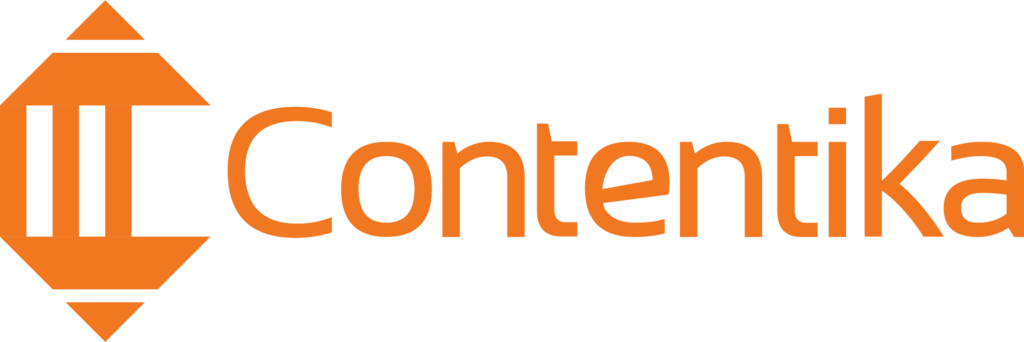Having a well thought-out plan is essential for any business that wants to be successful in their content marketing efforts. A content map can help you create an effective strategy and ensure that the content you’re creating is hitting all of your targets.
Content mapping involves organizing content into logical categories and groups that convey the most impactful message to your target audience. It goes beyond simply posting random content without any logic or structure. Instead, it requires deliberate planning and execution to achieve the desired results. .
In this blog post, we’ll discuss how to create a winning content map for your business that will boost the effectiveness of your digital marketing efforts.
What Is Content Mapping?
Content mapping is a strategic process used by marketers to create and organize content that meets specific business objectives. It involves organizing, visualizing, and analyzing data related to the desired outcomes of an organization’s content marketing activities.
Content mapping helps businesses identify gaps in their existing content plan, determine what types of content should be produced, and align that content with overall goals. By taking the time to map out your content goals, you can ensure that all of your efforts will contribute towards achieving them.
Importance of Content Mapping
Content mapping is one of the most important steps in creating a successful content strategy. It helps to guide businesses in terms of what topics they should be talking about, when they should be talking about them, and how often.
Content mapping ensures that your content is coherent, targeted, and systematically organized for maximum impact. The significance of content mapping cannot be overemphasized. Content maps can help you stay on course with your content strategy, guarantee that all relevant topics are covered, and maximize your content marketing efforts. Here are the key benefits of content mapping:
1. Clarifies Objectives
Content mapping is an essential part of any successful content marketing strategy. It helps to clarify objectives and align them with the right audience, ensuring that the content generated serves its purpose.
It helps to define a clear path for the content you intend to create and promote, as well as how it will be presented across various mediums. When used correctly, it can help identify gaps in your current offering, highlight opportunities for improvement, and drive engagement with potential customers.
2. Streamlines Content Development
Content mapping helps streamline the content development process, offering insights into how to best present information that will meet customer needs. Creating a map of all your content ensures that the pieces fit together seamlessly and are easy for readers to digest.
Developing a comprehensive map of your current and future content gives an understanding of what topics have already been covered, which ones still need attention, and where there may be potential areas for expansion. This allows you to better plan out what needs to go into each piece of writing as well as what should be left out.
3. Enhances Reach and Engagement
Content mapping is an essential tool in any digital marketer’s arsenal, helping to enhance reach and engagement with target audiences. A well-crafted content map acts as a blueprint to help achieve your business goals.
A successful content mapping strategy ensures that all the right pieces of content get placed in front of the right people at the right times.
Content mapping allows you to identify gaps in your current messaging and create content that speaks directly to those gaps, increasing engagement and reaching more potential customers. By strategizing where, when, and how to present your content, you can maximize its effectiveness, ensuring that the most important messages are seen by key audiences.
10 Steps to Creating a Winning Content Map for Your Business
1. Download a Content Map Template
The first step in creating a winning content map is downloading a template from one of the many available sources online such as tribute media and demand metric.
A good template will usually include questions such as: who is your target audience, what types of topics will be featured, how will these topics be organized, and which content vehicle best suits your purpose.
A template can help you plan out the overall structure of your content and narrow down what types of topics to focus on.
For example, if you are promoting a website about healthy living, you may want to consider content categories like diet, exercise, and lifestyle. Using a template can help ensure that your map is organized in such a way as to best address the needs of your target audience.
2. Determine the Buyer Persona You Wish to Target
The second step to creating a winning content map is to determine the buyer persona you want to target. This can be done by researching your audience thoroughly, looking at customer profiles, and understanding their interests, challenges, and goals.
Doing this will help provide context when crafting messages for each post, ensuring that they resonate with the intended audience. Additionally, understanding the needs of your target buyer persona helps inform what types of content pieces may best serve them.
For example, if your target market consists primarily of retirees or those on fixed incomes, then investing time in creating blog posts about saving money or budgeting would likely yield higher engagement rates than more costly pieces like videos or interactive games.
As you begin mapping out content ideas for each buyer persona, it’s important to consider the type of content that will resonate best with them. Researching topics, formats, and trends related to your target audience can help you create an effective content map that will speak directly to them.
3. Consider the Buyer Persona’s Buying Cycle Stage
When mapping out content, it is important to consider the buyer persona’s buying cycle stage. For example, if you are targeting a business owner in the awareness stage, you might create content that outlines common challenges experienced by business owners.
If you are targeting a potential customer in the decision stage, you may want to create content that shows how your product or service is an ideal solution for solving their challenge. Combining buyer personas with lifecycle stages allows marketers to craft unique and targeted content for each segment of their audience.
This ensures that every piece of content has been tailored specifically to address the needs and concerns of that particular segment – ensuring higher engagement rates and better conversion rates overall.
Furthermore, this helps marketers stay ahead of the competition by delivering content that is personalized and relevant to their target audience. Ultimately, this practice will help marketers build trust with customers and form lasting relationships.
4. Review Possible Questions That Personas Might Have During the Awareness Stage
Crafting a winning content map for your business allows you to brainstorm questions that your personas have in the awareness stage. This is because this will help you determine what type of content you should create and how you can effectively target each persona.
Brainstorming should involve research into the topics and problems the personas are likely looking for answers to, as well as exploring different channels available for distributing those answers. For example, if you know one particular persona would be interested in learning more about your products or services, develop a few questions they might have related to that topic.
What value do they get from using them? How can they benefit from them? What makes them unique compared to similar products or services? By brainstorming questions related to the personas’ interests and needs, you can gain valuable insight into how they are likely to interact with your content.
5. Creating Awareness Stage Content
Creating content that speaks to the awareness stage of your buyer’s journey is fundamental when it comes to designing a winning content map. This type of content should provide potential customers with helpful information related to their current needs without jumping straight into product-focused material.
For example, blog posts can be used to answer initial questions and provide insights into solutions for problems, while webinars and ebooks offer more in-depth guidance on topics.
Social media can then be leveraged to guide prospects toward this more comprehensive material by providing short snippets that are both informative and engaging. The purpose of creating awareness stage content is to introduce potential customers to your product and demonstrate how it can help them achieve their goals.
6. Explore Ways to Position Your Solution as Your Persona Enters the Consideration Stage
At the consideration stage, you should focus on positioning your product as the perfect solution for your customer’s needs. To do this, create content that reflects their pain points and offers a clear solution to their problem.
Offer advice and guidance as they move towards making a purchasing decision. Present comprehensive information such as infographics, demos, or webinars to help make an informed decision.
Developing resources like detailed customer case studies can also be beneficial in providing customers with evidence of success stories involving your product offering. Additionally, use metrics such as user reviews and feedback scores to provide customers with the assurance they need to make their purchasing decisions easier.
7. Creating Consideration Stage Content
You need to go in-depth into what sets your product or service apart from others in the market. People are now actively looking for content that can help them decide which solution is best for their needs.
To do this, create videos comparing and contrasting offerings, whitepapers, case studies, testimonials from current customers, etc. Videos and whitepapers are great tools to use here because they provide detailed information about the features and benefits of your product/service compared to competitors.
Case studies give prospects a look at how other customers have used your product/service to solve their problems. Testimonies offer up real experiences that people can relate to and understand on an emotional level.
All of these content types should be tailored to the particular needs of your target audience. The more customized and personalized it is, the more likely it is to drive conversions. Once they have all the information they need, prospects are ready to make their purchase decisions.
8. Consider Objections That Would Hinder Buyers From Buying in the Decision Stage
At this point in the content mapping journey, it’s time to consider any potential objections that may arise from potential buyers. What’s stopping them from purchasing your solution? It could be anything from pricing, to different methods of solving the problem.
Even if your competitors have a more affordable solution or greater market authority, you can still attract prospects and increase the likelihood of a purchase if your offering provides significant value.
For example, if one of your competitors has a cheaper product, but doesn’t offer the same level of quality or customer support as yours does – use this as an advantage when targeting prospects. You can highlight how their lower-priced option doesn’t come with the same level of support and quality, which may be a deal-breaker for certain buyers.
If your product is more expensive than others on the market but offers superior functionality – this can also be used as an advantage in your content mapping. You can point out how investing in a higher-cost solution up front could save money down the road with long-term benefits.
The key here is to consider any objections that would hinder potential buyers from making a purchase, and create content tailored to addressing those issues and explaining why your solution should be given serious consideration.
By doing so, you’ll be able to demonstrate how you can provide real value compared to other offerings on the market, helping move prospects closer to conversion.
9. Creating Decision Stage Content
At the decision stage of the buyer journey, it’s time to present your offering in its best light. As such, you can use content such as case studies and customer testimonials to provide social proof that your product or service is worth investing in.
If a potential customer is having trouble picturing what it would be like to implement your solution in their organization, you can also provide product demos that allow them to get a more concrete idea of how things will work from their end.
These demos can be especially helpful if they’re engaging and interactive, giving prospects a unique look at how using your product or service could play out for them. Finally, you may also have success with providing additional resources that help prospects make an informed decision about whether your product or service is the best fit for them.
10. Determine How These Content Elements Interact
Content mapping is the act of taking all the content elements you’ve identified and plotting them in a visual way that takes into account how these pieces interact together. This helps you to determine the overall content strategy for your buyers’ journey, from awareness to purchase.
For example, if you’ve identified a need for an article that explains the benefits of your product and a buyer’s guide, then you can map out how these two pieces work together. You might create a drip campaign in which the first email contains the article, followed by another that contains the buyer’s guide. This way, buyers will be exposed to both types of content in an organized and timely manner.
Conclusion
Content mapping has become an essential part of modern business. To stay competitive and relevant in today’s world, it’s more important than ever to ensure that your content marketing strategy is on-point and effective.
Creating a comprehensive content map that aligns with your target audience and refines your message is the key to staying ahead of the competition. This article has provided valuable insights and tips on how to create an effective content map that will help you maximize the potential of the digital landscape and keep your customers engaged.
By following these steps, you can develop a powerful content strategy that will keep your customers coming back for more. With careful planning and attention to detail, you can maximize the potential of the digital landscape and get the most out of every piece of content you create. Start mapping today and reap the rewards of a stronger, more successful business tomorrow.











